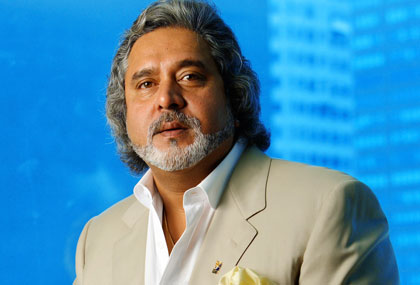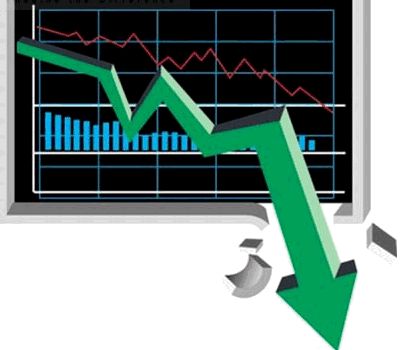Vivek Kaul
So what is common to Baba Ramdev, Kishore Biyani, Vijay Mallya and the government of India, other than the fact that they have all been in the news lately? To put it simply, they all like operate in areas where they lack expertise and in the process make a mess of it.
Let us start Baba Ramdev who became a household name by selling the benefits of Yoga to the masses. He claimed that even diseases like cancer could be cured through yoga. Those who have seen his yoga DVDs will recall the line “karte raho, cancer ka rog bhi theek hoga”.
So far so good. Then he decided that he had enough of preaching yoga and wanted to get into politics and vowed to get all of India’s black money hoarded abroad, back to India. The politicians in the government clearly did not like this (for obvious reasons) and went hammer and tongs after him. Stories were leaked to the media about the wealth he had accumulated over the years and that damaged his credibility as a yoga guru as well. Ramdev has continued in his attempts to establish himself as a politician but with very little success.

Kishore Biyani brought the retail revolution to India, having been inspired by Sam Walton who started Wal-Mart. His retail businesses were doing decently well till he decided to get into a wide variety of businesses from launching an insurance company to even selling mobile phone connections. When times were good he accumulated a lot of debt in trying to grow fast. Now he is in trouble in trying to service the debt and rumors are flying thick and fast that he is planning to sell Big Bazaar, his equivalent of Wal-Mart. This after he sold controlling stake in the cloths retailer, Pantaloons.
Vijay Mallya started Kingfisher Airlines in 2005, going beyond his core business of alcohol. Kingfisher now has accumulated losses of over Rs 6000 crore, and has never made money since its launch. The lack of focus has hurt Mallya’s core alcohol business and United Spirits is no longer India’s most profitable alcohol company. That tag now belongs to the Indian division of the French giant Pernod Ricard.

And finally the government of India, which has been bailing out the troubled airline Air India over and over again. The pilots of the airline keeps going on strike and the government keeps putting a few thousand crores every few months, to keep running the airline.
So the question that crops up here is what is Baba Ramdev doing in politics? Why is Kishore Biyani trying to sell insurance and mobile phone connections to you? And why are Vijay Mallaya and the government of India trying to run an airline?
They would be better off concentrating on things they are good at. These are things they shouldn’t be doing. It is not their area of expertise or what they are good at. The days when individuals, businesses and even governments could be an expert at many things at the same time are long gone.
In the last 100 years there have been only two individuals who have won the Noble prize twice for two different subjects. Marie Curie won the physics prize in 1903 and the Chemistry prize in 1911. Linus Pauling won it twice, the Chemistry Prize in 1954 and Peace Prize in 1962.
So in the strictest sense of the term, Marie Curie is the only person ever to have won a Noble prize in two different subjects and that happened almost 100 years back. This is primarily because as more and more things have been invented and discovered, subjects have become more complex requiring full time attention and expertise.
What is true about individuals is also true about businesses. The expertise and the attention required to run a business has increased over the year. Hence, the moment a businessman tries to go outside its area of expertise, he loses focus, and the chances of the new business doing well are remote.
Let’s take the case of DLF, the biggest real estate company in the country. It tried getting into the insurance and mutual fund business. It had to sell its stake in the mutual fund business and if news reports are to be believed it is trying to lower its stake in the insurance venture by selling its stake to HCL. Now why is a computer major trying to buy into an insurance business which is losing money, is beyond me?
Satyam was in good shape till it remained an IT company. The moments its owner developed aspirations beyond IT and got the company into real estate and infrastructure space, trouble cropped up. Real estate companies have tried unsuccessfully to get into the luxury hotel business and hotels have tried unsuccessfully to get into the luxury apartment business.
Reliance Industries attempts in the retail business haven’t gone anywhere. Anil Ambani who had build a good business in Reliance Capital is struggling with Reliance Communications and Reliance Power. Subrata Roy’s attempts to diversify into the film and television business have come a cropper, with the film business of Sahara, more or less being shutdown. NDTV, a premier English news channel, tried getting into the entertainment channel business with NDTV Imagine. It had to sell out. Cigarette major ITC has been trying to establish itself in the FMCG business for years now. Though it has had some success at it, the business hardly throws up any money in comparison to its cigarette business. All kinds of entrepreneurs have gone into the insurance business in India and are now struggling. This includes Kishore Biyani. At the same time the Tatas have been struggling with their telecom business for years.
There is a thing or two all these guys can learn from internationally renowned investor Warren Buffett. During the period of 1994-2000, the United States saw a whole lot of dotcom companies coming up with their initial public offerings. Some of these shares achieved astonishing highs. The shares of Netscape Communications Corporation, an internet browser company which controlled 75% of the browser market, were sold to investors at $28 per share. When the stock was listed on August 9,1995, it went to $74.75 during the course of the day and finally closed at $58.25, doubling in a single day. Another stock booksamillion.com went up by 973% to $47 in the course of just three days in November 1998. theGlobe.com which listed on November 13,1998, gained 606% during the course of the day and closed at a price of $63.50.
Despite these humungous gains Warren Buffett did not invest a single penny in these stocks. He did not understand the business models of these stocks and remain focused on his investment philosophy of “value investing”. Not surprisingly he had the last laugh as dotcom and technology stocks started crashing after they had peaked in March 2000.
Buffett did not abandon his core philosophy of value investing just because there was “easy money” to be made somewhere else. And he came out on top, for the simple reason that he chose to remain focused on what he knew.
But this is rarely the case. When times are good and there is a lot of easy money floating around every entrepreneur likes to “expand” his business and get into other things. But in this day and age, when things are as complicated and competitive as they are, diversification into different businesses rarely works.
Businesses these days need full time attention from entrepreneurs. Let’s take a look at the airline business. As Warren Buffett put it in a letter he wrote to the shareholders of Berkshire Hathaway “The worst sort of business is one that grows rapidly, requires significant capital to engender the growth, and then earns little or no money. Think airlines. Here a durable competitive advantage has proven elusive ever since the days of the Wright Brothers. Indeed, if a farsighted capitalist had been present at Kitty Hawk, he would have done his successors a huge favor by shooting Orville down…The airline industry’s demand for capital ever since that first flight has been insatiable. Investors have poured money into a bottomless pit, attracted by growth when they should have been repelled by it.”
The reason airline businesses burn capital endlessly is for the simple reason that airlines have very little control over their cost. The major expense in running an airline is oil (the company can lease the aircraft it doesn’t have to always buy them). And oil prices have been over $100 per barrel for a while now. Airline companies have no control over this price, though they can hedge themselves by buying derivatives. But that can be a risky business as well.

So higher the oil price, higher is the cost of running an airline and given the lure of owning an airline, the sector remains a very competitive one, all over the world. Hence companies cannot always pass on an increase in their costs to the end customers though higher ticket prices. Given these reasons airlines are a specialised business, which require full time attention. It is definitely not a business which Vijay Mallya can look to successfully manage, busy as he is running his diverse businesses of alcohol and real estate, indulging in expensive hobbies like IPL and Formula 1, and cheaper ones like commenting regularly on Twitter.
The government of India falls in the same category. Its primary area of activity is governing the nation(which it is anyway making a mess of) and not running an airline. It simply doesn’t have the expertise to run one. Southwest Airlines is successful because it has remained focused on the airlines business. It did not suddenly decide to launch a new beer just because their airline business was constantly throwing up cash over the years.

Kishore Biyani should learn from his inspiration Wal-Mart. The company did not get into the insurance business. They did not say “now that we have so many people coming to our stores, let’s try and sell insurance to them along with fast moving consumer goods”. Or as Warren Buffett puts it ” If you buy things you don’t need, you’ll soon sell things you need.”
That leaves Baba Ramdev. He can learn from his more famous predecessor the Sai Baba of Puttaparthi. Given the following he had he could have easily gotten into politics. But that would have put him at the same pedestal as the politicians who looked up to him as their guru. And thus rightly he did not.
Marketing guru Al Ries has said in the past “Focus is the essence of marketing and branding.” I guess it’s time to rephrase that phrase. “Focus is the essence of marketing, branding and business”. And its time Ramdev, Biyani, Mallya, the government and many others learnt that lesson.
(The article originally appeared on May 10,2012 at http://www.firstpost.com/business/what-ramdev-biyani-mallya-and-govt-can-learn-from-buffett-304770.html).
(Vivek Kaul is a writer and can be reached at [email protected])







